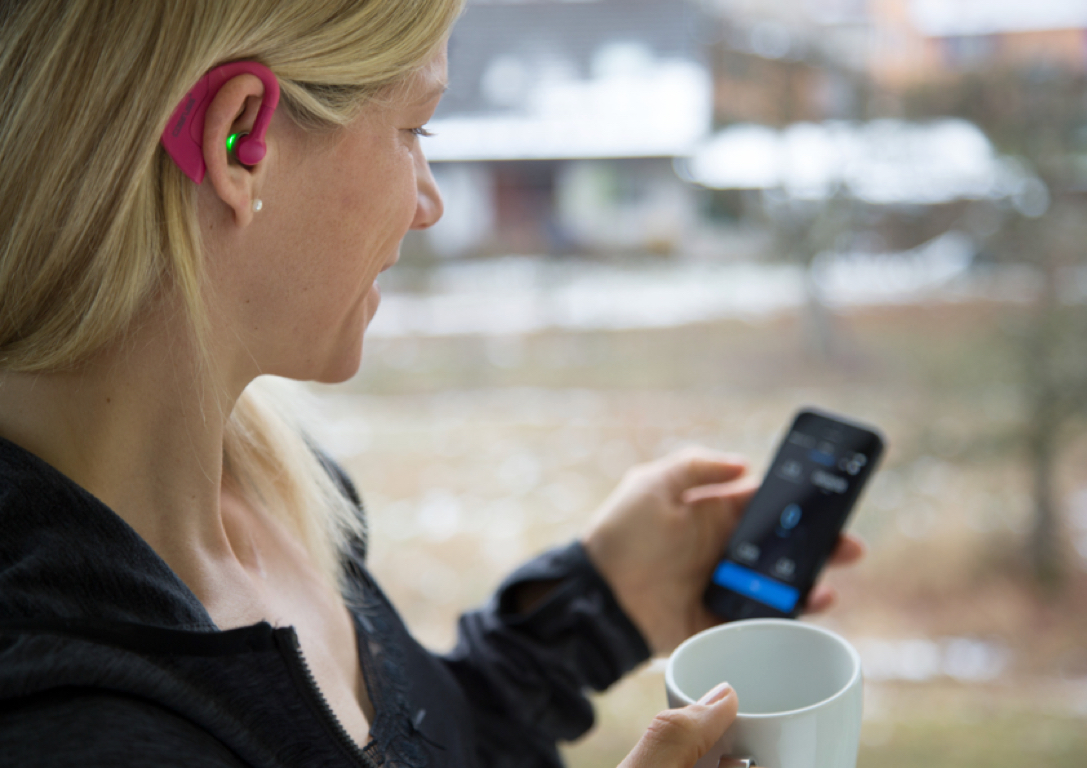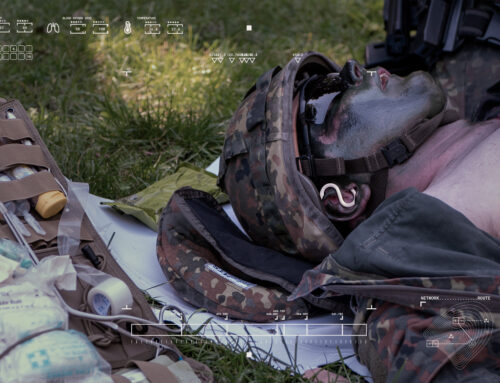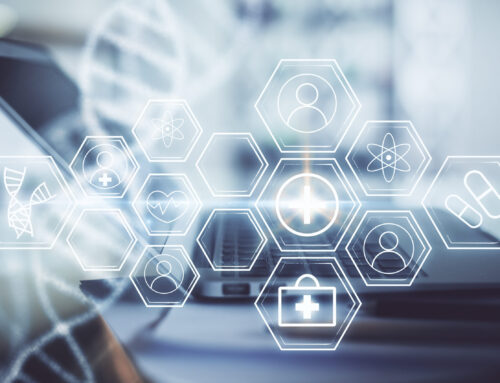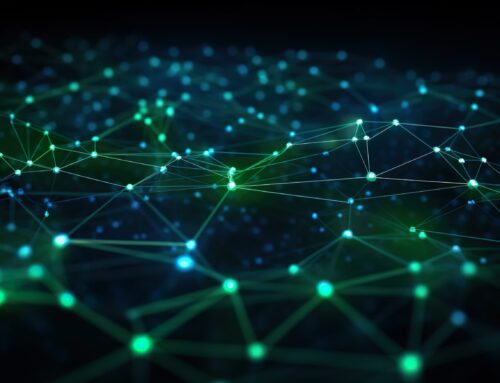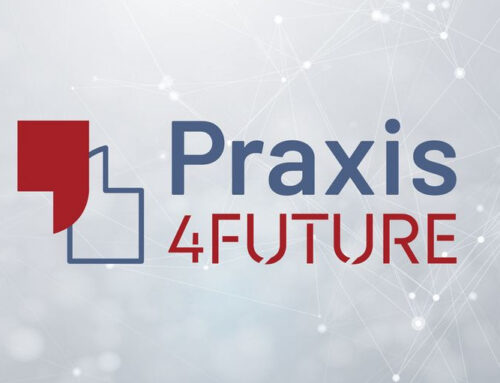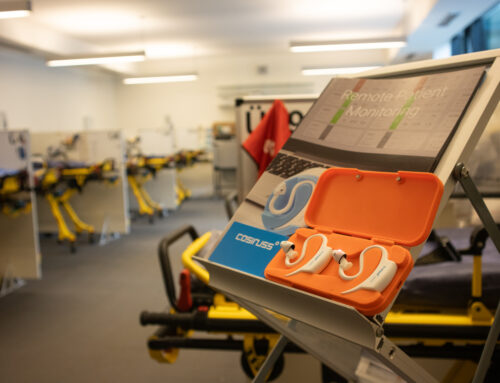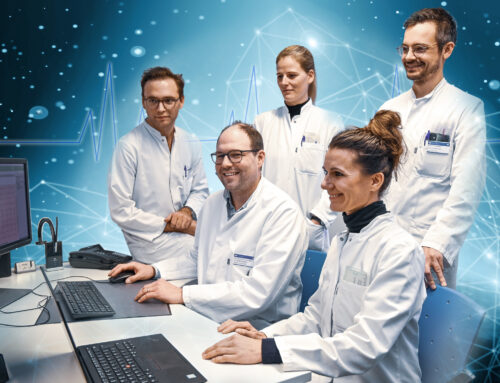Bachelor thesis by Yannick Stelzner, software developer
“Conception and realization of a vital signs monitoring app based on the use of in-ear wearables”.
In the TELECOVID study by Prof. Dr. Schmidt of the Klinikum rechts der Isar (TU Munich), which has been running since April 2020, Covid 19 patients are being monitored remotely in home isolation using cosinuss° in-ear wearables. This solution attempts to relieve hospitals and staff in the Covid-19 pandemic by monitoring the following vital signs of the patients at home: Oxygen saturation, heart rate, respiratory rate and body temperature. Under the supervision of medical staff, the patients’ data are analyzed on an online dashboard in the clinic and – if necessary – hospitalization is initiated.
Goal: Mobile vital signs monitoring via smartphone
Until now, however, neither the medical staff of the Klinikum rechts der Isar nor the patients themselves had the option of viewing the recorded vital signs in a mobile way, for example on their smartphones. For this reason, I set out to develop a mobile solution in my bachelor thesis. With the realization of an application, it should be possible to map various functions of the cosinuss° server – in particular the display of the data records – so that the measured data can be accessed and analyzed by the medical staff and the patients on their smartphones in the future.
In my bachelor thesis I specifically dealt with the factors that have to be considered for a conception of the planned app as well as with the final realization.
Special requirements of mobile patient monitoring
To ensure structured and reliable development, various requirements had to be taken into account in advance, some of which play a role in remote patient monitoring in particular. These include:
- Different target groups: Users of the mobile application belong to two target groups with different needs and expectations. For example, there are those directly involved in the study (patients, physicians, technicians) as well as those indirectly affected (family members, friends). For example, different data views in the monitoring app apply to each of these groups: medical staff can view the data records of several patients, whereas family members can only view the data of the known patient.
- Data protection: Special attention is paid to data security and strict compliance with data protection guidelines. This includes authorization processes, pseudonymization of records, encrypted data transfer, and application protection used to lock the app.
- Server specifications: For the presentation of data sets in a dashboard and graph view, the specific features and specifications of the server must be investigated and taken into account. This specifically includes sorting people into different “projects” and viewing historical data.
- Essential Functions: The application must have essential functions in addition to functions to fulfill its main purpose. These include the display of a menu as well as information pages about the app.
- Selection of the operating system: In order to make the application available to as many people as possible, the worldwide market share of the most widely used smartphone operating systems must be taken into account. In addition, the choice should fall on a system with which many developers are involved, so that an exchange can take place – for example, with regard to various problems.
Technical and visual implementation
After identifying the requirements, a design creation was necessary for planning the app realizations. This served to link all requirements and aspects to be taken into account. This resulted in both a technical design and a visual design pattern.
For the technical development “Flutter” was considered and selected. With this UI development software, it is possible to develop smartphone applications across operating systems so that they can run on both iOS and Android devices. In order to be able to regulate the communication between the server and the application, the RESTful API of the server was also analyzed in more detail.
The visual representations in the design pattern were used to get a first impression as well as a plan for the final realization (see Fig. 1).
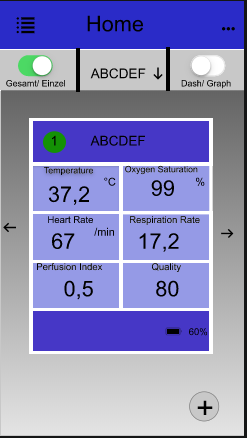
Fig 1: Example for the representation of the data sets.
Results & Outlook
In addition to the actual development of the vital signs monitoring app, regular tests were also essential during the implementation phase. In this way, problems that arose, such as difficulties within the login process or the exact representation of the individual persons and their data records, could be resolved. Also the application could be adapted to the user experience. In addition, a large number of planned features could be successfully implemented. Among them are the application protection, the authorization process, the representation of the persons in a dashboard as well as a graph view, a calendar and various information pages.
The result of my bachelor thesis is a first version of the Vital Signs Monitoring App, which can be used in the future – also beyond the TELECOVID study – for various use cases.
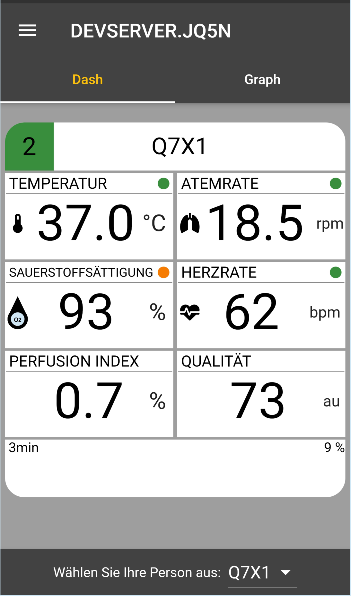
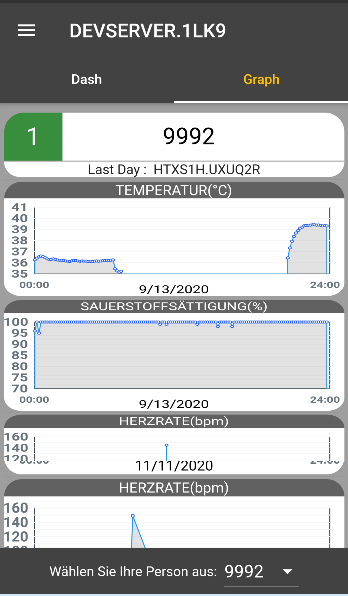
Fig. 2 and 3: Insights into the latest version of the Vital Signs Monitoring App.
